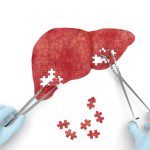By Galectin Therapeutics. on January 7, 2016
The many accomplishments at Galectin Therapeutics during 2015 ranged from incremental progress touching every aspect of our business to significant advancements with GR-MD-02. Importantly, this progress forms the basis for numerous milestones expected in the coming years including clinical progress, intellectual property fortification, further engagement with the investment community and ongoing outreach to educate our shareholders about our work to develop new therapies, the regulatory environment in which we operate and our target markets.
CEO Perspectives, Dr. Traber’s blog introduced last year, is designed to provide scientific and technical information largely regarding our work with GR-MD-02 in layman’s language. Much of our progress and accomplishments during 2015 were chronicled in the 14 blog postings, which can be found here.
We were delighted that in the final days of 2015 a U.S. District Court dismissed both the federal securities class-action lawsuit and the shareholder derivative actions lawsuit filed in the Summer of 2014 against Galectin and certain officers, directors and a shareholder, which had cast an inappropriate cloud over our many achievements in 2015. The Court entered final judgments of dismissals in both actions based on the Court’s finding that any further amendment of the complaints would be futile (i.e., dismissed with prejudice). Plaintiffs have the right to appeal the Court’s dismissals within 30 days. Based on the Federal Court’s rulings, Galectin is seeking dismissal of a duplicative shareholder derivative action in Nevada which was filed after the federal actions.
Our Clinical Programs
NASH with advanced liver fibrosis
Development of GR-MD-02 for the treatment of non-alcoholic steatohepatitis (NASH) with advanced fibrosis and cirrhosis continues to be the primary focus of our company. We completed a successful Phase 1 clinical trial and announced final data in January 2015. The Phase 1 trial demonstrated that GR-MD-02 is safe, with potential for therapeutic effect on fibrosis in NASH patients with advanced fibrosis. We found no serious adverse events and no treatment-emergent adverse events related to our drug. Furthermore, GR-MD-02 was found to be safe and well tolerated in each of the three dose-escalating cohorts of patients, who were suffering from NASH with advanced fibrosis.
This finding alone defines the study as a success, but we gained additional valuable information. We found that the FibroTest® score, a composite biomarker of five different blood tests that has been correlated with the extent of liver fibrosis, was significantly reduced by GR-MD-02 treatment in the third dosing cohort of 8 mg/kg. In addition, we found that some patients in this cohort also showed a decrease in liver stiffness, which has a direct correlation with fibrosis. We published a comprehensive piece on the results of the Phase 1 study in a CEO Perspectives blog post, which can be found here.
In addition to the phase 1 trial in NASH patients with advanced fibrosis, we reported the results of a drug-drug interaction study with GR-MD-02 and midazolam, a common sedative, which showed that in healthy volunteers there was no unfavorable interaction between the two compounds. Because many patients with chronic diseases are on multiple medications over long periods of time and may take other medications on an intermittent basis, this finding is important to the commercial potential of GR-MD-02 and to the patient population that is eligible to participate in our Phase 2 program. We published a CEO Perspectives piece on this topic, which is available here.
The information gleaned from the Phase 1 studies formed the basis for our Phase 2 program, which consists of two studies, one in NASH patients with advanced fibrosis and the other in NASH patients with cirrhosis. We submitted our protocol to the U.S. Food and Drug Administration (FDA) for the cirrhosis study in the first quarter, engaged our contract research organization and began screening patients at the end of June.
This study, the NASH-CX trial, is a multicenter, randomized, placebo-controlled, double-blind, parallel-group Phase 2 trial to evaluate the safety and efficacy of GR-MD-02 for the treatment of liver fibrosis and resultant portal hypertension (HVPG) in patients with NASH cirrhosis. A total of 156 patients at approximately 50 sites in the U.S. will be randomized to receive either 2 mg/kg of GR-MD-02, 8 mg/kg of GR-MD-02 or placebo, with 52 patients in each arm. The primary endpoint is a reduction in HVPG. Patients will receive a total of 26 infusions every other week for one year, at which time they will be evaluated for change in HVPG compared with placebo. HVPG will be correlated with secondary endpoints of fibrosis on liver biopsy as well as with measurement of liver stiffness via FibroScan® and assessment of liver metabolism (13C-methacetin breath test, Exalenz), which are non-invasive measures of the liver that may be used in future studies. More information can be found at www.clinicaltrials.gov and in a CEO Perspectives blog post, which can be found here.
We are pleased with the pace of the NASH-CX study and we remain on track to provide data readout in at the end of 2017, as we have previously indicated.
In September we initiated a 30-patient study with GR-MD-02 in NASH patients with advanced fibrosis, our NASH-FX study, with 15 patients receiving 8 mg/kg of GR-MD-02 and 15 patients receiving placebo every other week for 16 weeks. This study will evaluate the safety and efficacy of GR-MD-02 on liver fibrosis using multi-parametric magnetic resonance imaging (LiverMultiScan®, Perspectum Diagnostics) as the primary endpoint and liver stiffness as assessed by magnetic resonance-elastography and FibroScan as secondary endpoints. This study is also proceeding as planned, with top-line data expected around the end of the third quarter of 2016. We published a CEO Perspectives piece on this trial, which is available here.
Psoriasis
As we have previously reported, one of the patients participating in our Phase 1 NASH study was a long-term psoriasis sufferer, and this patient’s psoriasis cleared as the study progressed, and remained cleared for many months following the conclusion of the study. With an established theoretical pathway for how inhibition of galectin-3 might affect psoriasis, in September we began an open label 10-patient Phase 2a pilot study in patients with moderate-to-severe plaque psoriasis. We expect data readout from this study late in the third quarter of 2016. More information and background on this study can be found here.
Melanoma
We continued to support independent research with GR-MD-02 in combination with two commercial melanoma drugs, as preclinical research has shown our compound enhances the efficacy of immune checkpoint blockade therapies, or so-called checkpoint inhibitors, a new class of drugs. GR-MD-02 is progressing through a Phase 1b study in combination with Yervoy®, and a Phase 1b study in combination with Keytruda® was initiated in the fourth quarter of 2015 with enrollment to begin early in 2016. Preclinical work in mouse cancer models with GR-MD-02 added to checkpoint inhibitors shows a boost in anti-tumor immunity, a reduction in tumor size and increased survival. Both of these studies are being conducted at the Providence Cancer Center in Portland, Oregon. Galectin is providing GR-MD-02 to the investigators, who are funding the costs of these studies. We published a CEO Perspectives on these trials, which is available here.
In the trial combining Yervoy and GR-MD-02, two dosing cohorts have been completed and the third cohort delivering 4 mg/kg of GR-MD-02 is enrolling now. Of the seven patients that have received the combination therapy, there has been no dose limiting toxicity. Following completion of the 4 mg/kg dose cohort, a total of 10 patients will be dosed at 8 mg/kg. Immune markers as well as tumor response are being monitored in this study.
Significant Presentations and Publications
Galectin’s researchers presented at several important industry meetings during the year. Dr. Traber delivered an invited presentation of the company’s research with GR-MD-02 in NASH at the American Association for the Study of Liver Diseases (AASLD) Industry Colloquium in March. He participated in the session entitled “NASH: Clinical Endpoints and Drug Development” and discussed the role of galectin-3 in organ fibrosis generally and liver fibrosis in particular, and GR-MD-02 as a galectin-3 inhibitor. He reviewed the published preclinical data showing that GR-MD-02 is effective in reversing inflammation and fibrosis in a mouse model of NASH and also in reversing cirrhosis and improving portal hypertension in a rat model of cirrhosis. He also reviewed the company’s Phase 1 study results and its Phase 2 clinical program design. The abstract of Dr. Traber’s presentation can be found here.
In addition, preclinical research from a study led by Stefanie Linch, Ph.D. in the laboratory of tumor immunology expert William L. Redmond, Ph.D. of the Providence Cancer Center’s Earle A. Chiles Research Institute was presented in November at the Society for Immunotherapy of Cancer’s (SITC) 30th Anniversary Annual Meeting. The studies presented were conducted by the Institute in collaboration with Galectin Therapeutics. The poster presentation “Galectin-3 inhibition using novel inhibitor GR-MD-02 improves survival and immune function while reducing tumor vasculature” and an abstract was published in the Journal for ImmunoTherapy of Cancer. The poster presentation is available for review here.
Interviews with Dr. Traber appeared in a number of publications throughout 2015, including R&D Magazine in a piece entitled “Finding the Holy Grail Treatment for Fatty Livers,” available here, Obesity News Today published its Q&A article entitled, “Exclusive: Dr. Peter Traber Discusses Non-alcoholic Fatty Liver Disease”, available here, and MD Magazine, which conducted an online interview with Dr. Traber at the AASLD meeting. That interview can be found here.
Galectin management also participated in a number of investment conferences throughout the year, including programs for institutional investors, retail investors and family offices.
Foundational Support for our Business
During 2015 we considerably strengthened our intellectual property portfolio and received a U.S. patent Notice of Allowance for the use of pectin compounds to reduce fibrosis in multiple diseases. This patent is particularly important because it not only permits GR-MD-02 use for NASH with fibrosis, but it covers other compounds in our pipeline and a multitude of diseases with a fibrotic etiology. We also continued to build our international patent portfolio with patents issued or allowed in Israel and Australia.
We also made excellent progress with our Chemistry, Manufacturing and Controls (CMC), all of which are vital to the proper conduct of our clinical trials with GR-MD-02 and are essential components of the final application to the FDA for a drug’s approval. We discussed this progress during the year in the CEO Perspective post found here. We also reached a very significant milestone in our preclinical toxicology program, having completed chronic administration of GR-MD-02 in two animal species, allowing chronic administration in human subjects.
Lastly, we were very pleased to have completed a $9.8 million financing during the fourth quarter. This capital is expected to fund currently planned operations through the first quarter of 2017, and will be used mainly for clinical trial expenses and other research and development expenses, as well as for general corporate purposes.
Looking Ahead to 2016
We are looking forward to executing on several important milestones in 2016, with highlights including the following:
- We will continue enrollment in the NASH-CX study and work with our investigators and contract research organization to keep on our stated timelines for data readout in late 2017
- We will continue enrollment in the NASH-FX study, and continue to expect data readout around the end of the third quarter of 2016
- We will continue enrollment in the psoriasis Phase 2a study, with data readout also expected at the end of the third quarter of 2016
- While we do not control the rate of enrollment of the trial, we expect data from the Providence Cancer Center’s study with Yervoy in combination with GR-MD-02 in advanced metastatic melanoma by the end of 2016.
- We expect that Providence Cancer Center will be enrolling patients in the study with GR-MD-02 in combination with Keytruda during 2016.
We are fully aware that yesterday’s accomplishments set tomorrow’s expectations, and we look forward to creating shareholder value by executing on numerous milestones during 2016. We are grateful to our long-standing, loyal shareholders for their continued support and to the hard-working staff at Galectin Therapeutics who share a unifying commitment to addressing significant unmet clinical needs in NASH, as well as in oncology and psoriasis.
These “CEO Perspectives” are a regular feature of our communication activities and may contain forward looking statements within the meaning of the Private Securities Litigation Reform Act of 1995. These statements relate to future events and use words such as “may,” “might,” “could,” “expect” and others. These statements include those regarding the hope that Galectin Therapeutic’ s development program for GR-MD-02 will show that it can be both safe and effective when used in combination with other drugs for the treatment of patients with cancer. For a discussion of additional factors impacting Galectin’s business, see the Company’s Annual Report on Form 10-K for the year ended December 31, 2014, and subsequent filings with the SEC. You should not place undue reliance on forward-looking statements. Although subsequent events may cause its views to change, management disclaims any obligation to update forward-looking statements





